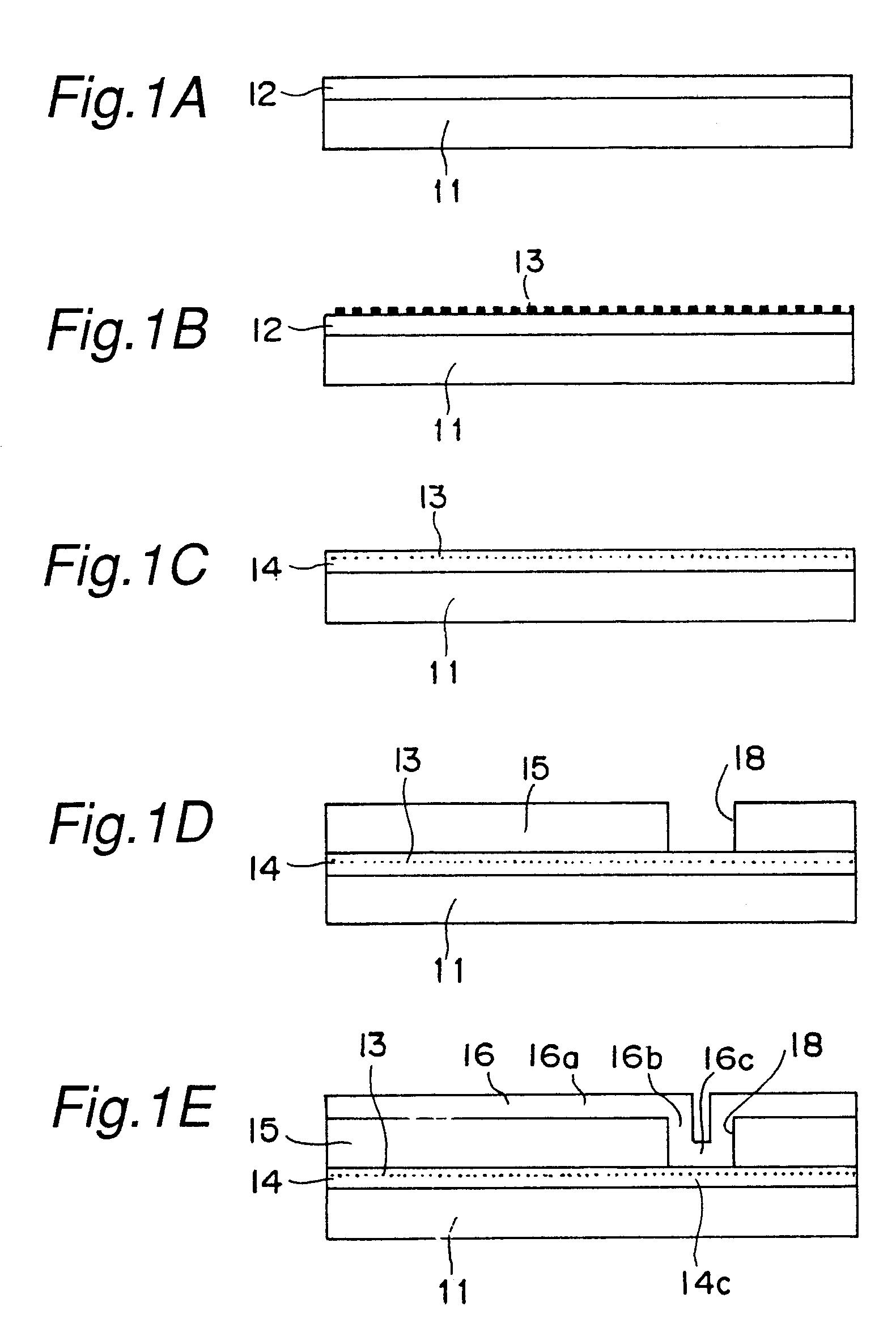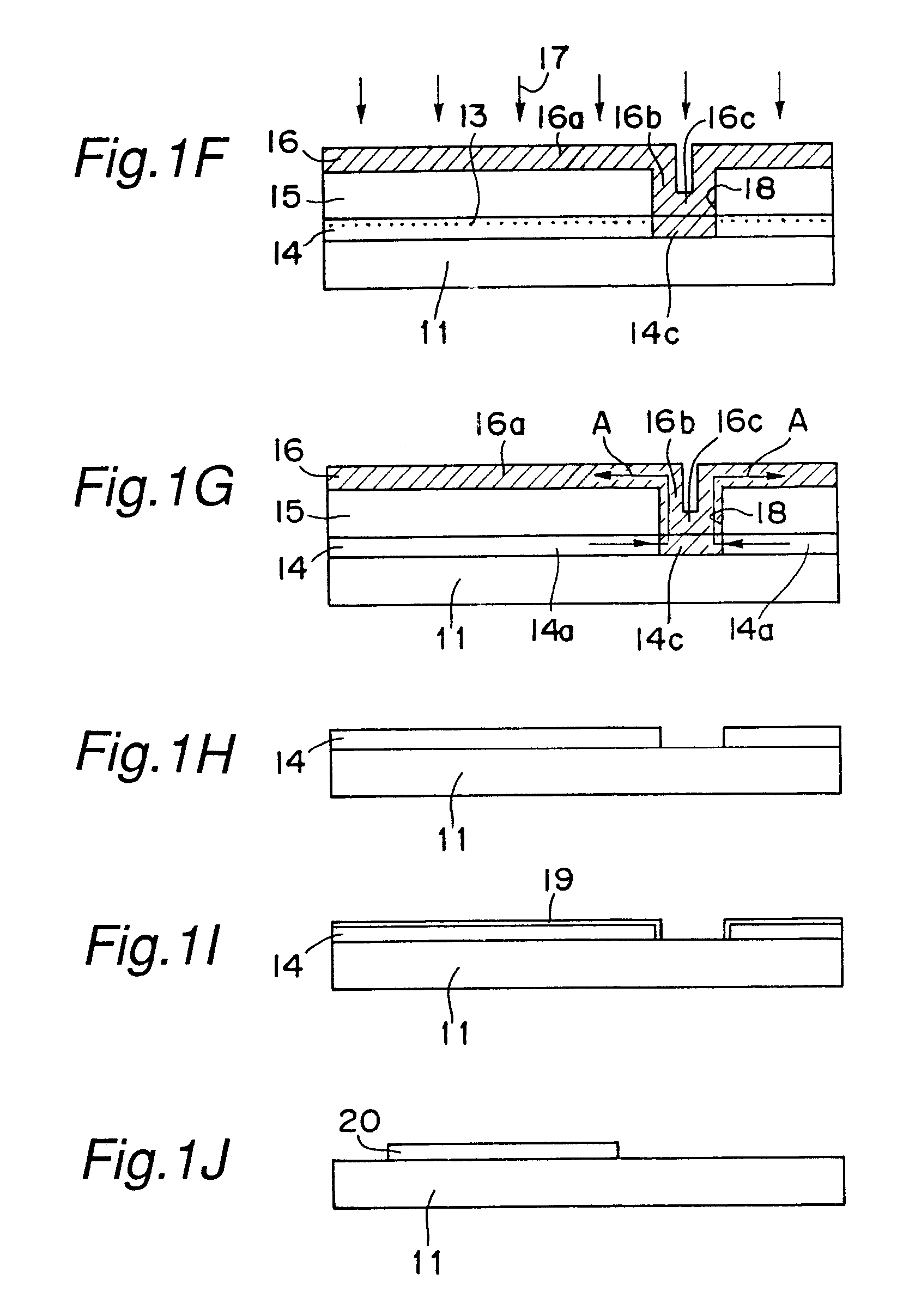Semiconductor manufacturing method
- Summary
- Abstract
- Description
- Claims
- Application Information
AI Technical Summary
Benefits of technology
Problems solved by technology
Method used
Image
Examples
Embodiment Construction
Hereinbelow, a semiconductor manufacturing method of the present invention is described in detail by way of an embodiment thereof illustrated in the accompanying drawings.
FIGS. 1A, 1B, 1C . . . 1M are sequentially show the steps of a TFT manufacturing method to which the present invention is applied. i) As shown in FIG. 1A, an amorphous silicon (.alpha.-Si) film 12 is deposited to a thickness of 70 nm on a quartz substrate 11 by LPCVD (low pressure chemical vapor deposition) process. Conditions for the growth are set to a temperature of 450.degree. C. and a pressure of 50 pa with the use of disilane gas (Si.sub.2 H.sub.6) as the material gas. ii) Next, as shown in FIG. 1B, an aqueous solution prepared by dissolving a metallic element, for example, Ni to 10 ppm into pure water is applied over the entire surface of the .alpha.-Si film 12 by spinning process. This Ni element acts as a catalyst for accelerating the crystallization of the .alpha.-Si film 12 in a heat treatment process, w...
PUM
 Login to View More
Login to View More Abstract
Description
Claims
Application Information
 Login to View More
Login to View More - R&D
- Intellectual Property
- Life Sciences
- Materials
- Tech Scout
- Unparalleled Data Quality
- Higher Quality Content
- 60% Fewer Hallucinations
Browse by: Latest US Patents, China's latest patents, Technical Efficacy Thesaurus, Application Domain, Technology Topic, Popular Technical Reports.
© 2025 PatSnap. All rights reserved.Legal|Privacy policy|Modern Slavery Act Transparency Statement|Sitemap|About US| Contact US: help@patsnap.com



